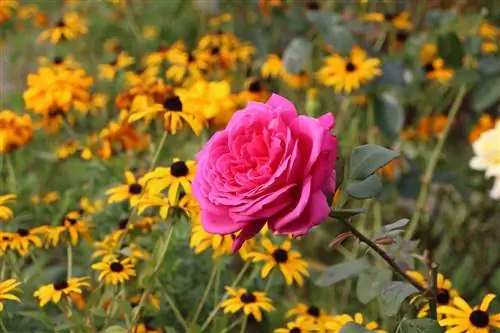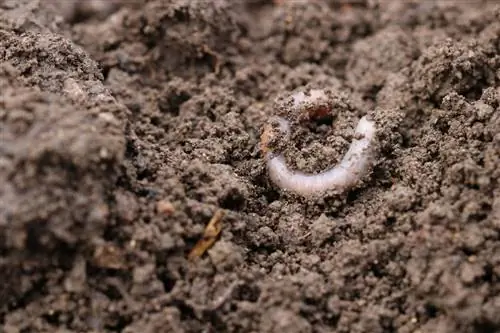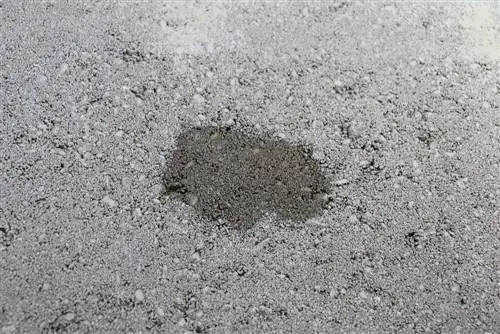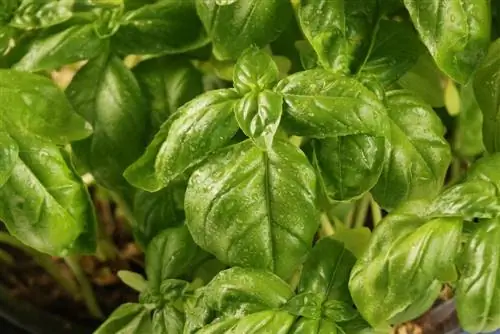- Author admin [email protected].
- Public 2023-12-17 03:39.
- Last modified 2025-01-24 12:45.
Mixing substrate for roses yourself is not difficult. Only a few tools and components are required, which are easy to obtain.
Needs of Roses
When roses are replanted, they impose certain conditions on the soil in which they are placed. There should not have been any roses in the place where the roses are to be planted; on the one hand, the soil is exhausted and, on the other hand, diseases could spread. The rose needs a permeable soil that does not dry out too quickly and is rich in humus and nutrients. Only then will the rose grow and bloom particularly persistently and luxuriantly. The correct pH value is either neutral or slightly acidic.
The new substrate
Of course the soil can be replaced, it is easier to look for a new place and just improve the substrate there. The situation is different with roses that are planted in pots. This substrate is mixed together from scratch if you don't want to buy rose soil or just use any potting soil.
Composition of rose soil
Commercial rose soil consists of different components that depend on the respective manufacturer. Mostly included are:
- Compost or peat
- Sound
- Fertilizer
- Minerals
Note:
Mycorrhizal fungi are added to some rose soils. They are intended to improve the nutrient absorption of the roses.
Mix your own rose clay
Making potting soil suitable for roses is not difficult. All you have to do is mix the necessary ingredients together in the right proportions. However, there are different options, depending on whether it is potted plants or bed roses.
With fertilizer or without?
It seems obvious to provide roses with fertilizer when planting. Purchased rose soil almost always contains a slow-release fertilizer that provides the flowers with nutrients for several weeks.
However, it is not so easy to say whether this makes sense. A rose that you plant yourself should initially grow well and form an extensive root system that can supply the plant with nutrients and water even in lean and dry times. For this reason, it is better not to fertilize the rose plant at all or only a little at first, then the roots will have to grow longer and more branched in search of nutrients.
Work equipment
What is needed to make the substrate depends on the amount that is mixed. One bucket is enough for individual roses. If an entire rose bed needs to be equipped with new substrate or if there are a lot of balcony plants, a larger masonry bucket will do the trick. Other necessary work equipment:
- Shovel or hand shovel
- something to mix, a stick or an old wooden spoon for example
- Measuring cup, scale or smaller container to measure individual components
Individual components and their meaning
Topsoil or garden soil
Almost every garden has enough normal garden soil, unless it is a completely new plant. Topsoil can then be obtained from various sources, such as a garden supply store. In your own garden, simply use the top layer of soil.
Clay or clay
Since sandy soil stores nutrients and water poorly, it is enhanced with clay or loam. If the soil is loamy, it is not necessary to add additional clay. Clay soil is available from building material suppliers.
Small grain bark mulch
To improve the soil structure, bark mulch can be helpful, especially if the soil is calcareous and needs to be acidified. It is important that the mulch has a very small grain size. Bark mulch is available at sawmills or gardening stores.
Compost
Well-rotted compost or manure gives the plants the nutrients they need. They are released evenly over a longer period of time. Compost soil is best obtained from your own garden. An alternative are public composting facilities.
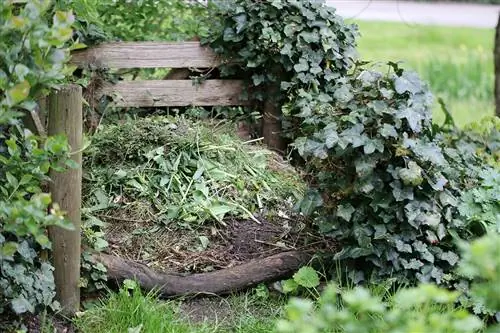
Rock flour
Primitive rock flour improves the mineral composition and strengthens the plants. Rock dust is available at garden centers or online retailers.
Lime
Adding lime only makes sense if the pH value is low and the soil is too acidic for roses. You can buy lime at hardware stores or garden stores.
Instructions for making pot soil
- The main ingredient is garden soil or topsoil, which is filled into the bucket or a larger container.
- One part compost or rotted manure is mixed with three parts of garden soil.
- Substances for soil improvement, i.e. clay or lime, are now incorporated. Here too, one part to three parts garden soil.
- Sufficient bark mulch is added so that the soil has a loose, airy structure. The bark mulch improves the water storage capacity.
- Finally, mix all the rose soil with some rock dust. Since minerals only need to be present in trace amounts, two tablespoons per 10 liter bucket are sufficient.
- The self-made substrate is filled into the pots and the roses are inserted.
Instructions for floribunda roses
Making your own potting soil for bed roses is a little more complicated, but can be done directly on site. The effort is worth it because the roses are then supplied with minerals and nutrients for a long time.
- The size of the rose bed is marked and the topsoil is dug. Since the planting holes for roses have to be so deep that the roots are not kinked, a depth of up to 40 cm can be assumed.
- Spread a tarpaulin next to the bed and pile the topsoil on top.
- Mix the garden soil with compost. Here too, the rough mixing ratio is one part compost to three parts garden soil.
- Loose up the bed's substrate and mix it with bark mulch. If the bed is threatened by voles, it makes more sense to spread rabbit wire on the ground. The bark mulch is then mixed into the topsoil.
- If necessary, incorporate soil conditioner and some rock dust.
- Place the roses in the bed. Fill the soil all around and press it down a little. Finally, water the roses well.
Note:
If other plants are planned in the rose bed, they will be planted together with the roses.

